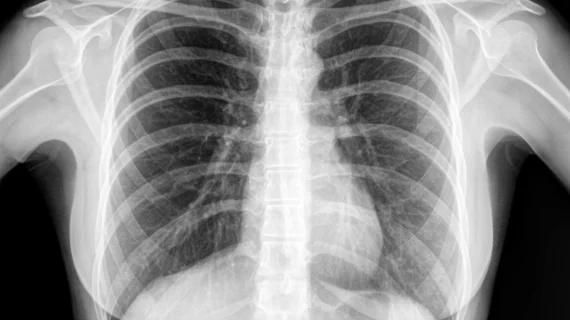Pediatric x-rays for bronchiolitis common despite 'Choosing Wisely' guidelines
Radiography was performed in nearly half of children admitted to a U.S. emergency department for bronchiolitis between 2007 and 2015, despite 2013 "Choosing Wisely" recommendations advocating against routine imaging exams, according to a research letter published Oct. 16 in the Journal of the American Medical Association.
There was no significant change in the amount of imaging conducted over the eight-year period, wrote lead author Brett Burstein, PhD, of the Division of Emergency Medicine at Montreal Children’s Hospital in Québec, Canada, and colleagues.
Excessive imaging for bronchiolitis—a lower respiratory viral infection common in young children and infants—contributes to high health care costs, radiation exposure and overuse of antibiotics. These consequences are detailed in the “Choosing Wisely” national recommendations published by the Society of General Internal Medicine in 2013 to help determine appropriate care.
Using data from the National Hospital Ambulatory Medical Care Survey (NHAMCS), Burnstein and colleagues analyzed 612 visits for acute bronchiolitis to 300 randomly selected emergency departments in the U.S. from 2007 to 2015 among children younger than 18 years old.
In total, the researchers identified 53-75 bronchiolitis cases with a median age of eight months. Of these cases, 46.1 percent of the children received radiography exams.
Burstein and colleagues also found that patients who were only discharged from the emergency department had a radiography rate of 46.2 percent, compared with 44.8 percent for admitted patients.
“Assuming study visits can be projected to reflect the U.S. population, there would have been an estimated 2.92 million pediatric emergency department visits for bronchiolitis over the nine-year study period,” Burstein et al. wrote. “In this broad emergency department context, radiography was performed in nearly half of bronchiolitis cases, and more frequently at nonpediatric hospitals. These results suggest that nationwide quality initiatives are still needed to translate bronchiolitis guidelines into practice.”

